Kingdom Plantae Family Rosaceae Subgenus Anoplobatus Higher classification Rubus | Order Rosales Genus Rubus Scientific name Rubus parviflorus Rank Species | |
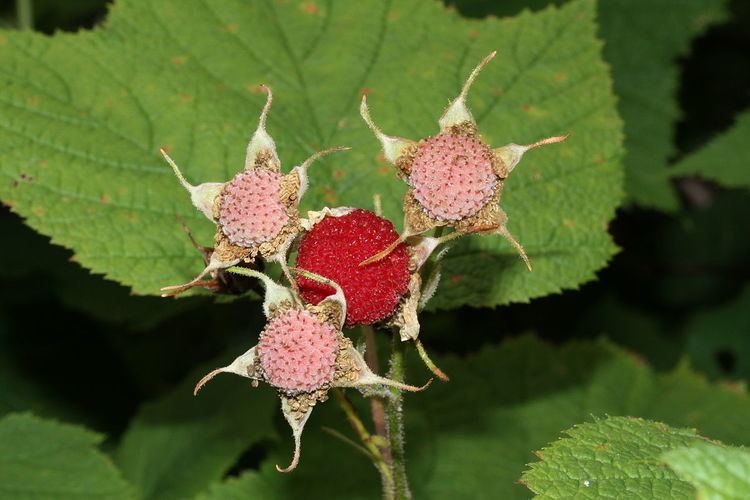 | ||
Similar Salmonberry, Rubus ursinus, Water, Oregon Grape, Beaked Hazel | ||
Thimbleberry harvest rubus parviflorus
Rubus parviflorus, commonly called thimbleberry, is a species of Rubus native to North America.
Contents
- Thimbleberry harvest rubus parviflorus
- Rubus parviflorus
- Distribution
- Description
- Cuisine
- Cultivation
- Cultivars
- Medicinal
- References
Rubus parviflorus
Distribution
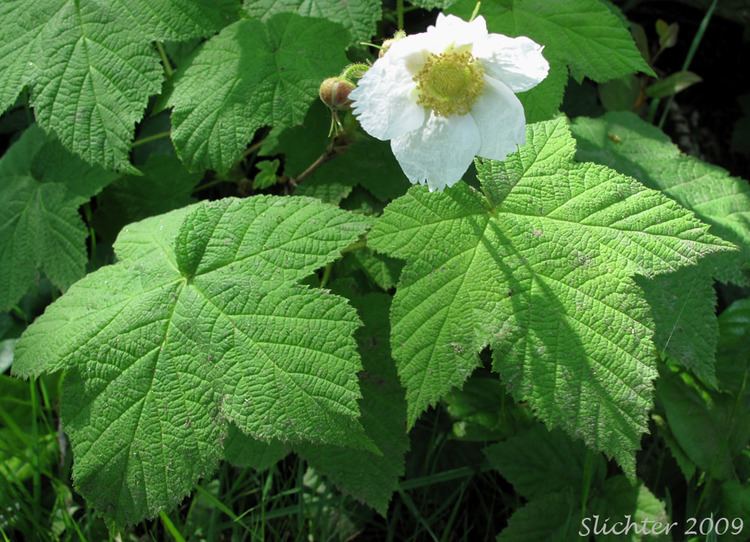
Rubus parviflorus is native to western North America from Alaska south as far as California, New Mexico, Chihuahua, and San Luis Potosí. Its range extends east to the Rocky Mountains and discontinuously to the Great Lakes Region. It grows from sea level in the north, up to elevations of 3,000 m (10,000 ft) in the south.
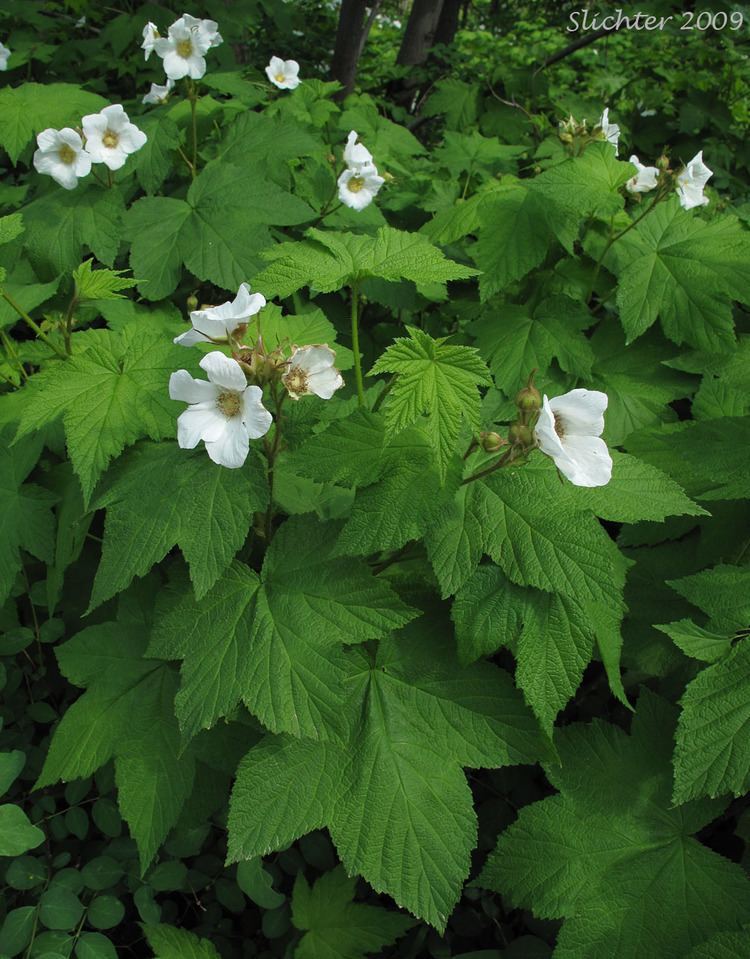
Rubus parviflorus typically grows along roadsides, railroad tracks, and in forest clearings, commonly appearing as an early part of the ecological succession in clear cut and forest fire areas.
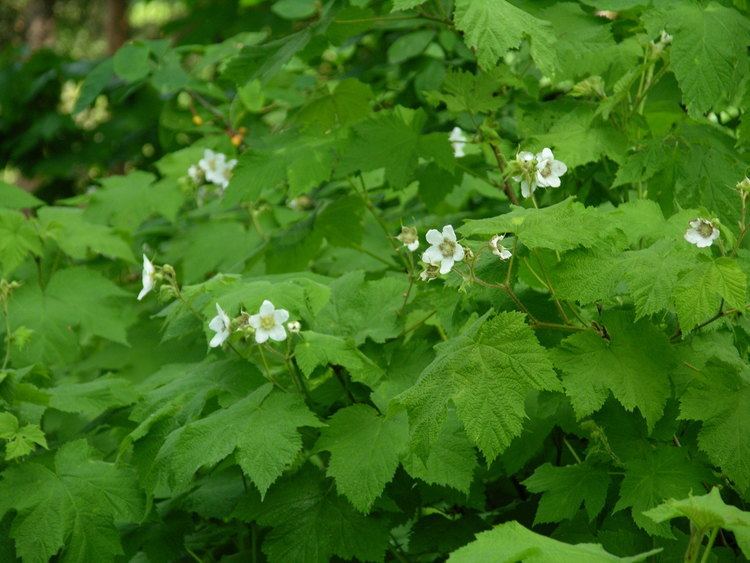
Thimbleberry is found in forest understories with typical flora associates including coastal woodfern, Dryopteris arguta, Trillium ovatum and Smilacina racemosa.
Description
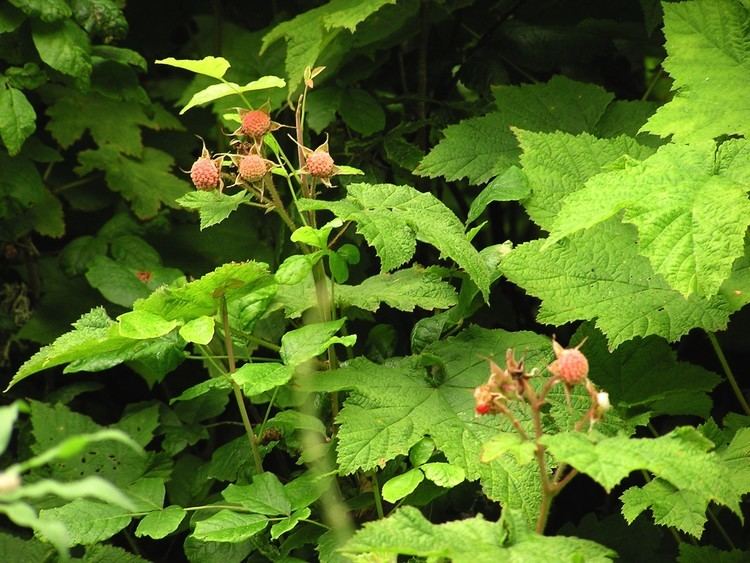
Rubus parviflorus is a dense shrub up to 2.5 meters (8.2 ft) tall with canes no more than 1.5 centimeters (0.59 in) in diameter, often growing in large clumps which spread through the plant's underground rhizome. Unlike many other members of the genus, it has no prickles. The leaves are palmate, up to 20 centimeters (7.9 in) across (much larger than most other Rubus species), with five lobes; they are soft and fuzzy in texture.
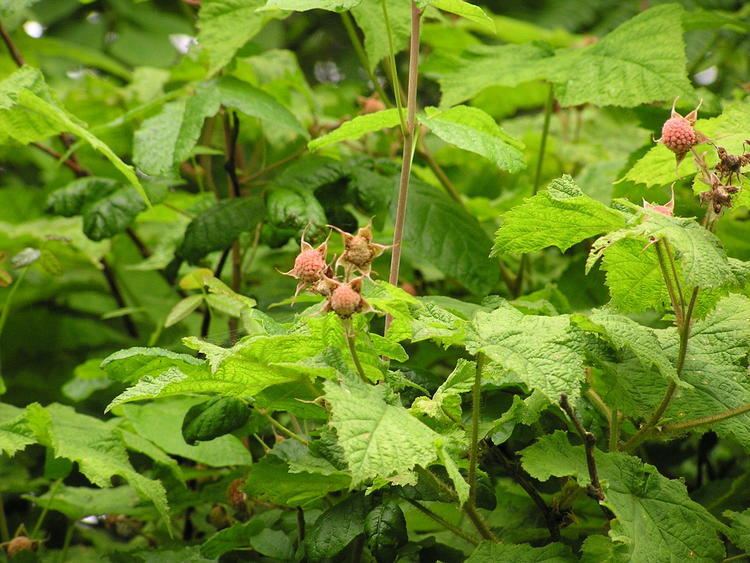
The flowers are 2 to 6 centimeters (0.79 to 2.36 in) in diameter, with five white petals and numerous pale yellow stamens. The flower of this species is among the largest of any Rubus species, making its Latin species name parviflorus ("small-flowered") a misnomer.
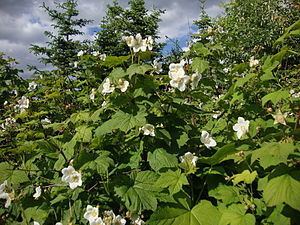
The plant produces edible composite fruit approximately a centimeter (0.4 inches) in diameter, which ripen to a bright red in mid to late summer. Like other raspberries it is not a true berry, but instead an aggregate fruit of numerous drupelets around a central core. The drupelets may be carefully removed separately from the core when picked, leaving a hollow fruit which bears a resemblance to a thimble, perhaps giving the plant its name.
Cuisine
Thimbleberry fruits are smaller, flatter, and softer than raspberries, and have many small seeds. Because the fruit is so soft, it does not pack or ship well, so thimbleberries are rarely cultivated commercially.
However, the wild thimbleberries can be eaten raw or dried and can be made into a jam which is sold as a local delicacy in some parts of their range, notably in the Keweenaw Peninsula of Upper Michigan. Thimbleberry jam is made by combining equal volumes of berries and sugar and boiling the mixture for two minutes before packing it into jars. Without sugar the cooked berries with their distinguished sweet sour taste are good for a while in the refrigerator and can be added to all kind of deserts and vinaigrettes.
Cultivation
Rubus parviflorus is cultivated by specialty plant nurseries as an ornamental plant, used in traditional, native plant, and wildlife gardens, in natural landscaping design, and in habitat restoration projects. The fruit has fragrance. Thimbleberry plants can be propagated most successfully by planting dormant rhizome segments, as well as from seeds or stem cuttings.
The flowers support pollinators, including of special value to Native bees, honeybees, and bumblebees. The fruit is attractive to birds. It is the larval host and a nectar source for the yellow-banded sphinx butterfly.
Cultivars
Cultivars of the plant are selected for ornamental qualities, such as for their fragrant flowers and/or attractive fall foliage color.
A double-flowered form of the thimbleberry was discovered near Squamish, BC, by Iva Angerman (1903–2008) of West Vancouver, BC. This clone does not appear to be in commerce, but is grown in the Botanic Garden of the University of British Columbia, Vancouver, and in the Native Plant Garden of the Royal British Columbia Museum, Victoria.
Another double-flowered thimbleberry was found about 1975 by Bob Hornback on Starrett Hill, Monte Rio, California and given the cultivar name 'Dr. Stasek', after an art instructor at Sonoma State University.
Medicinal
Many parts of the Rubus parviflorus plant were used for a great variety of medicinal purposes by Native Americans. Thimbleberries are very high in Vitamin C as well as A and can be used to treat scurvy. A poultice of the dried, powdered leaves can be used to treat wounds and burns, as well as the fresh ones to treat acne. A tea made from its leaves or roots can be used as a treatment for nausea, vomiting diarrhea and dysentery. Thimbleberry leaves can also be used as a natural toilet paper.
The Concow tribe calls the plant wä-sā’ (Konkow language)
